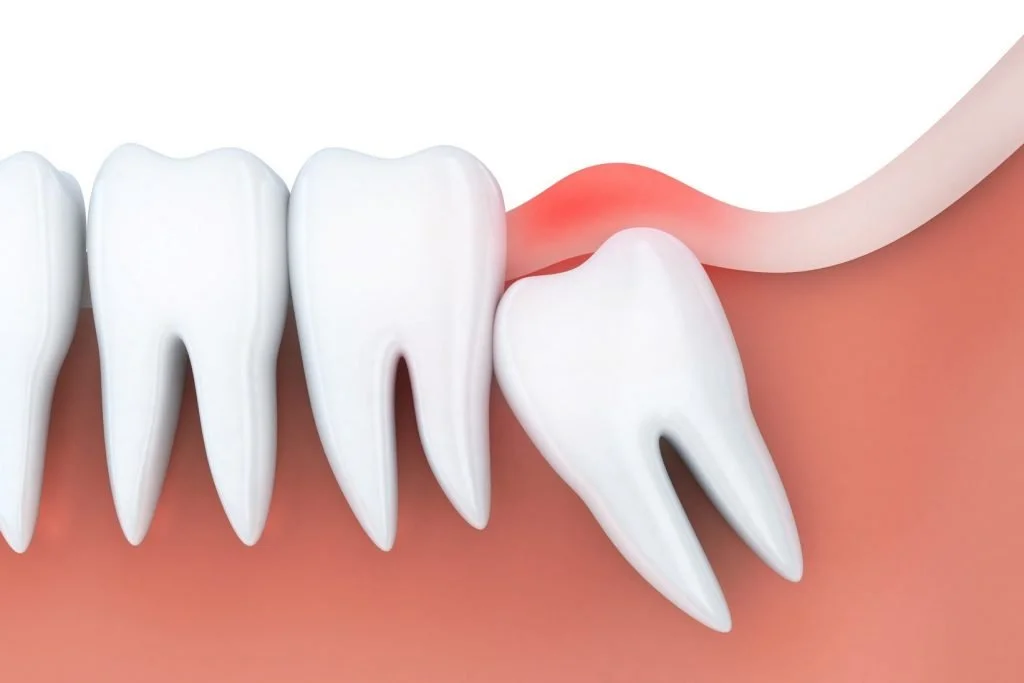Shopping cart
Subscribe to out newsletter today to receive latest news administrate cost effective for tactical data.
2478 Street City Ohio 90255
- Phone: 77 999 833 20
- Email: info@tinypearls.in
Subscribe to out newsletter today to receive latest news administrate cost effective for tactical data.
2478 Street City Ohio 90255
Wisdom teeth, or third molars, are the last permanent teeth to erupt, usually appearing between the ages of 17 and 25. While some individuals have sufficient jaw space for their wisdom teeth to emerge normally, many people experience impaction—a condition where the tooth fails to erupt properly due to lack of space, abnormal angulation, or obstruction by adjacent teeth.
Impacted wisdom teeth may remain fully trapped within the bone (complete impaction) or partially erupt through the gum (partial impaction). Both cases can lead to various dental problems such as infection, gum inflammation, decay, cysts, and damage to nearby teeth.
Wisdom tooth removal, also known as impaction surgery, is a minor surgical procedure performed to extract these problematic teeth. Dentists or oral surgeons typically use local anesthesia, sedation, or general anesthesia depending on the complexity of the impaction and the patient’s comfort level.
The procedure may involve creating a small incision in the gum, removing a portion of bone, and dividing the tooth into sections for easier removal. Once extracted, the area is cleaned, stitched if necessary, and allowed to heal naturally over the following days and weeks.


Not all wisdom teeth require extraction—some erupt normally and function like other molars. However, impacted or poorly positioned wisdom teeth can cause multiple complications, making removal necessary.
Impacted wisdom teeth often cause recurring jaw pain, headaches, or discomfort while chewing.
Partially erupted wisdom teeth create gum flaps that trap food and bacteria, leading to painful infections.
Since wisdom teeth are hard to reach, they are prone to decay. They may also affect adjacent molars.
Impacted wisdom teeth can push against second molars, causing crowding, root resorption, or gum problems.
In rare cases, fluid-filled cysts form around impacted teeth, damaging bone and surrounding structures.
Patients undergoing braces or corrective orthodontic treatments may need wisdom tooth removal to prevent shifting of aligned teeth.
Repeated inflammation near wisdom teeth can affect daily activities like eating, speaking, and even opening the mouth.
In many cases, dentists recommend preventive extraction even before symptoms occur, especially if X-rays show problematic angulation or insufficient jaw space. Early removal—often in the late teens or early twenties—generally results in smoother procedures and quicker healing compared to later in life.
Deciding on wisdom tooth removal depends on symptoms, clinical examination, and radiographic evaluation. Here are indicators that suggest it may be time to consult your dentist about impaction surgery:
Warning Signs You Shouldn’t Ignore:
Radiographic Indicators of Impaction:
Dentists rely on panoramic X-rays or CBCT scans to determine the type and severity of impaction. Common angulations include:
If left untreated, impacted wisdom teeth can compromise oral health and lead to chronic issues. Consulting a dentist early helps in planning timely intervention before complications worsen.
Understanding the process of wisdom tooth removal helps reduce anxiety and allows for better preparation.
During the Procedure:
After the Procedure:
Complications such as dry socket (when the blood clot dislodges prematurely) can delay healing, but they are rare with proper care. Following the dentist’s instructions is key to smooth recovery.
Wisdom tooth impaction surgery is not just about removing troublesome teeth—it is about preventing long-term complications, relieving chronic pain, and protecting the health of surrounding teeth and gums. While the thought of surgery may seem daunting, modern anesthesia, precise techniques, and proper post-operative care make it a safe and manageable procedure.
For young adults, timely removal often ensures an easier recovery and prevents future dental challenges. For those already experiencing discomfort, surgery provides lasting relief and restores confidence in daily activities like chewing, smiling, and speaking.
Far from being a setback, wisdom tooth removal can be seen as a pathway to long-term comfort and oral health, allowing you to move forward without the hidden risks that impacted teeth may carry.